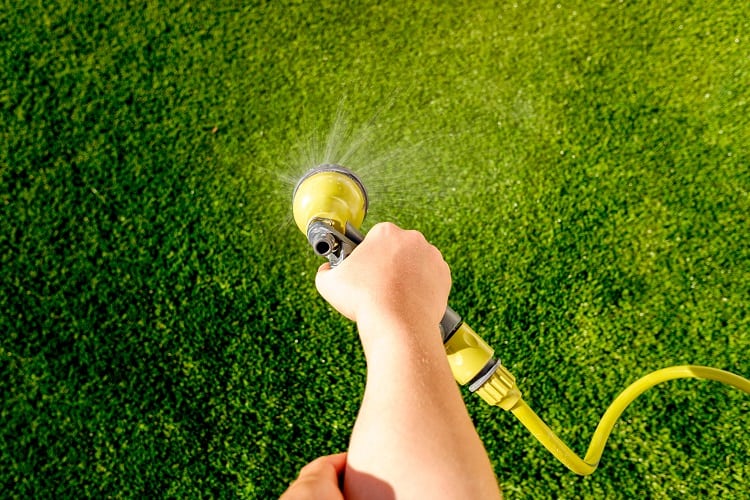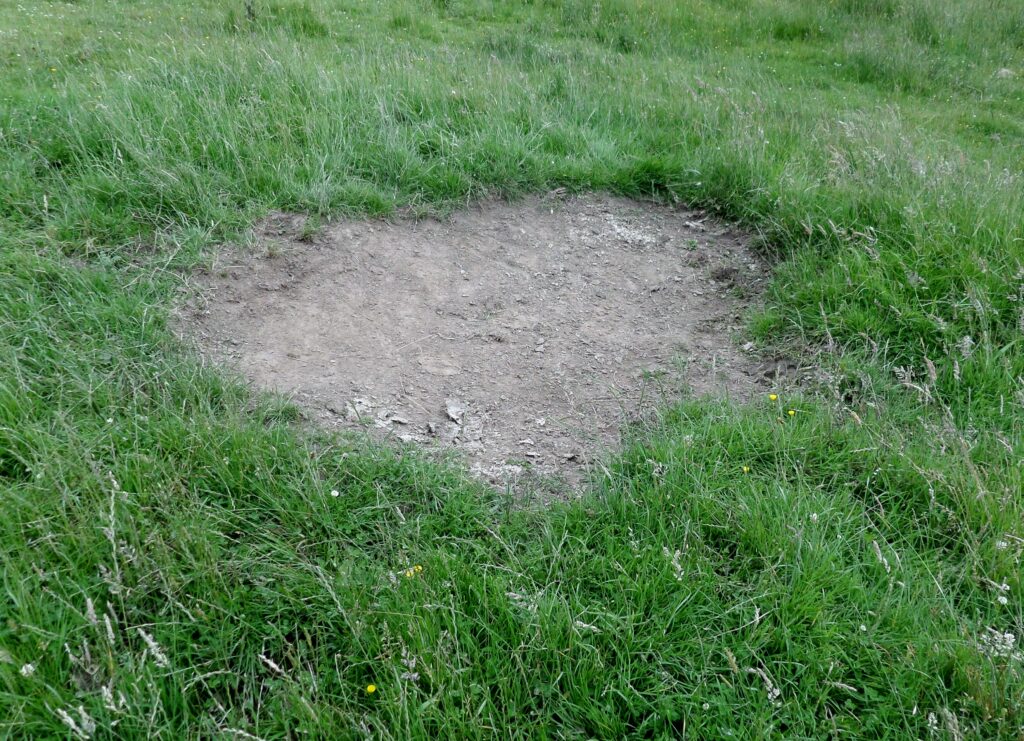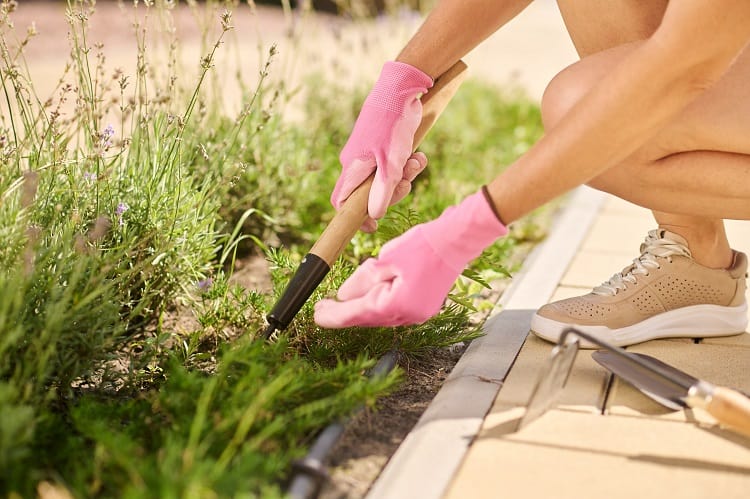With the fall and winter weather upon us, there are some important tasks you’ll want to do to keep your lawn looking great. A little preparation now will go a long way in the spring and summer months.
Fall Lawn Maintenance in 6 Easy Steps
Adjust Your Lawn Mower and Continue Watering
Yes, you’ve been doing this all spring and summer, but continue to mow and water your grass as normal. Nearing the fall season, you’ll want to be feeding your lawn about an inch of water every week – ideally in a single session.
An easy way to measure this is to mark 1” high on an old vegetable can, or use a tuna can, and set it out in the yard around the sprinkler. This will give you a rough idea of how much you’ve watered your lawn.
Follow the 1/3” Rule and never cut more than 1/3” in a single session. Instead, gradually decrease the lawn mower’s height week over week. Cool-season grass should be around 2” to 2.5” inches in height by the time winter rolls in. For warm-season grass, it’s shorter – around 1.5” to 2” in height. Overall, nothing taller than 3”. Anything taller could invite snow to pile up and cause more problems
For the last two mowings of the season, you should be setting your lawn mower to its lowest setting. Cutting this low will allow more sunlight to reach the crown of the grass, which results in less browning throughout the winter.
Remove Leaves and Other Debris
You will want to be removing leaves regularly to prevent disease and fungus from forming. Continue removing leaves until they’ve all fallen off the tree. Don’t forget to remove any sticks or other debris that finds its way into your yard.
Leaving too many leaves in your yard can create a mat that ends up suffocating the turf underneath.
If where you live doesn’t offer curbside pickup or removal of leaves, then you may want to mulch them with the lawn mower. Make sure there isn’t an enormous amount of leaves to mulch, otherwise it’s just going to create an even more difficult-to-move mat on top of the grass.
Aerate the Yard
After any debris has been removed and the yard freshly mowed, it’s highly recommended to aerate your yard. With a proper aerator too, ones that strap onto your feet do nothing and you’ll feel silly using them. An aerator can be rented from your local Home Depot or Lowe’s for about $10 an hour.
A walk-behind gas-powered unit can take care of most midsize yards in an hour or two.
Over time, thatch, stems, rocks, and other root systems can restrict the needed water, oxygen, and nutrients from reaching the roots. Aerating your yard helps to provide space and loosen up the soil to allow for these necessities to reach your grass.
If you’ve never aerated your yard before the machine basically pulls up hundreds of cylindrical plugs in your yard. Unsightly at first, but the plugs dissolve back into the yard in a couple of days. Aerating your yard every other year or every 3 years is a good schedule to follow.
Fix Bald Spots and Overseed Everything Else
Now is an ideal time to remedy any dead spots you might have in your yard and add even more seed to the grass that’s already there. A lawn repair kit from your home improvement store will remedy the dead spot quickly and spreading new seeds over other areas will promote additional growth. With warm weather, plenty of moisture, and less intense sun, now is an ideal time to lay some seeds down.
Don’t just throw seed over existing grass and expect it to grow, you’ll need to loosen about .25”-.5” of soil with a hard rake or machine. Waiting a day or two after aerating isn’t a bad idea since the soil will already have loosened up some from where it was previously. Add starter fertilizer to the bare spots to help get those areas started off on the right foot.
Continue to care for the seeds and water them lightly daily.
Fertilize Now for the Spring
If you never fertilize your grass during the spring or summer, now is an even more opportune time to do it. Grassroots will continue to grow during the fall season even if the leaves don’t appear as much. After aerating your yard and laying the seed down, fertilizer is the next logical step as it has a direct way to the grass’s root system and will provide essential nutrients for the newly laid seed.
Weed Removal
This list wouldn’t be complete without everyone’s favorite task: weed removal. Whether you pull weeds by hand or you use chemicals, weed removal and control are a must. Certain types of weeds, considered winter annuals, start to flourish around this time including chickweed, corn speedwell, spur weed, and many others.
You’ll want to use a weed killer that is a mixture of both pre and post-emergent herbicides. Pre-emergent herbicides will help to kill weeds that haven’t yet germinated, and the post will help those that have flowered and are currently growing. Start using these herbicides right as the temperature is dropping to the mid-50s to mid-60s.
Fall Lawn Maintenance: Summary
Taking these steps into consideration is crucial to having a great-looking yard in the spring. Preserve the work you’ve done this summer so that when the snow starts to melt you can continue from where you left off. In just a few weekends these tasks will have done wonders for your yard and it’ll be ready to take on the winter ahead.






